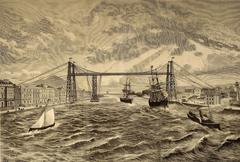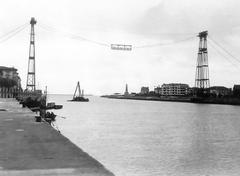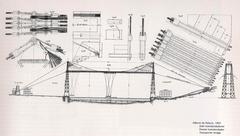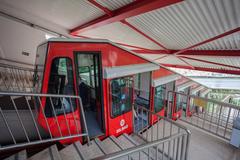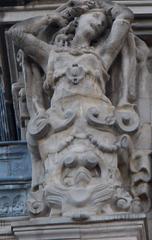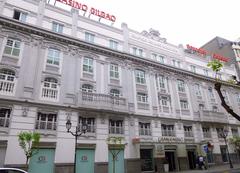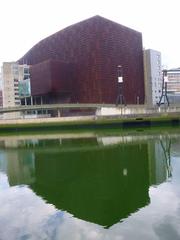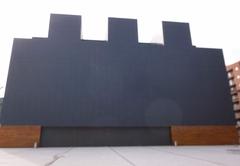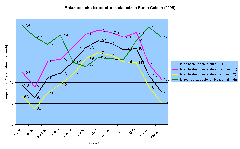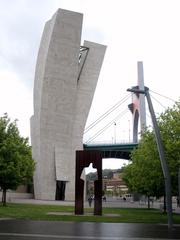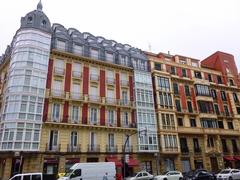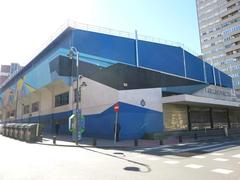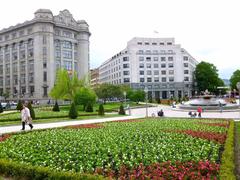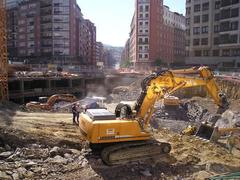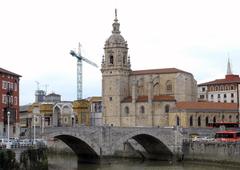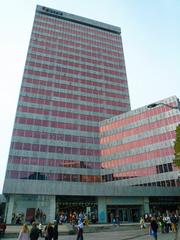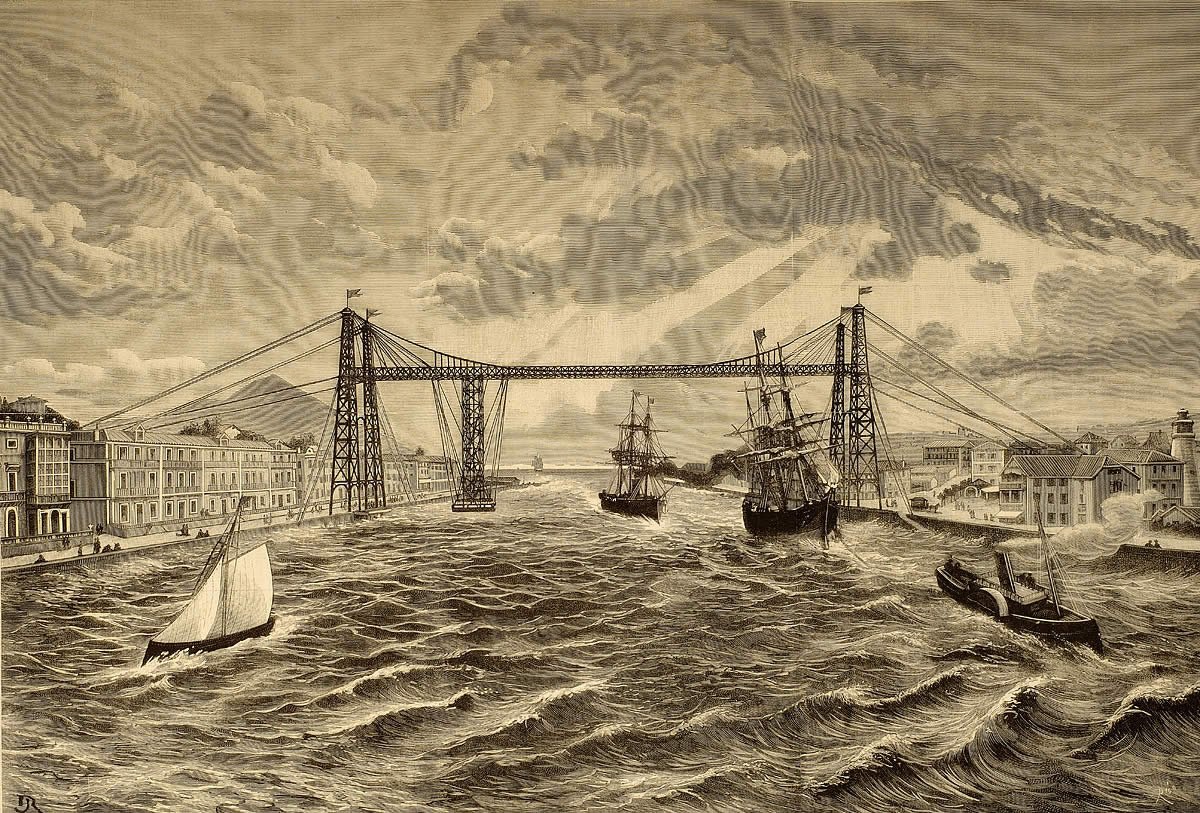
Comprehensive Guide to Visiting Puente Colgante de Bizkaia - Bizkaia Zubia, Bilbao, Spain
Date: 17/07/2024
Introduction
The Puente Colgante de Bizkaia, also known as the Bizkaia Bridge, stands as a testament to the ingenuity and industrial prowess of the late 19th century. Located in the metropolitan area of Bilbao, Spain, this iconic landmark not only connects the towns of Portugalete and Getxo across the Nervión River but also bridges the past and present through its unique architectural design and historical significance. Designed by Alberto de Palacio y Elissague, a disciple of Gustave Eiffel, and inaugurated in 1893, the Bizkaia Bridge holds the prestigious honor of being the world’s first transporter bridge (UNESCO). This guide aims to provide visitors with in-depth knowledge of the bridge’s history, cultural significance, and practical information for an enriching visit to this remarkable site.
Table of Contents
- Introduction
- History of Puente Colgante de Bizkaia
- Historical Milestones
- UNESCO World Heritage Status
- Modern-Day Relevance
- Visitor Information
- Special Events and Guided Tours
- Preservation and Maintenance
- Cultural Impact
- Conclusion
- FAQ
History of Puente Colgante de Bizkaia
Origins and Construction
The Puente Colgante de Bizkaia was designed by the Spanish engineer Alberto de Palacio y Elissague, a disciple of Gustave Eiffel, and was constructed between 1890 and 1893. Its primary purpose was to connect the towns of Portugalete and Getxo across the Nervión River without disrupting the maritime traffic to the Port of Bilbao. This innovative solution was necessary due to the rapid industrial growth in the region during the late 19th century (UNESCO).
Architectural Significance
The Bizkaia Bridge is the world’s oldest transporter bridge and a pioneering example of the use of iron in construction. It combines elements of both suspension and cable-stayed bridge designs, featuring a gondola suspended from a 160-meter-long horizontal iron structure. This gondola can transport passengers and vehicles across the river in just 1.5 minutes. The bridge’s design allowed for the continuous flow of river traffic while providing a reliable means of crossing for people and goods (ArchDaily).
Historical Milestones
Early 20th Century
In the early 20th century, the Bizkaia Bridge became a vital link in the region’s transportation network. It facilitated the movement of workers and materials between the industrial areas on either side of the river, contributing significantly to the economic development of the Greater Bilbao area. The bridge’s operation was uninterrupted even during the Spanish Civil War (1936-1939), although it did suffer some damage from bombings. The resilience of the structure during this tumultuous period is a testament to its robust design and construction (Basque Country Tourism).
Mid to Late 20th Century
The mid-20th century saw the bridge undergo several modifications and upgrades to accommodate increasing traffic and modern safety standards. In 1941, the original wooden gondola was replaced with a more durable metal one. Further renovations in the 1960s and 1980s included the reinforcement of the iron structure and the installation of new electrical systems to improve the efficiency and safety of the bridge’s operations (Structurae).
UNESCO World Heritage Status
In 2006, the Bizkaia Bridge was inscribed as a UNESCO World Heritage Site, recognizing its outstanding universal value as an industrial monument. The bridge is celebrated not only for its innovative design and engineering but also for its role in the social and economic history of the region. The UNESCO designation has helped to preserve the bridge and promote it as a significant cultural and historical landmark (UNESCO).
Modern-Day Relevance
Today, the Bizkaia Bridge remains fully operational and continues to serve as a vital transportation link. It has also become a popular tourist attraction, drawing visitors from around the world who come to marvel at its engineering and historical significance. The bridge offers guided tours, allowing visitors to learn about its history and construction while enjoying panoramic views of the surrounding area from the upper walkway (Bizkaia Bridge Official Site).
Visitor Information
Ticket Prices and Visiting Hours
The bridge is open to visitors year-round, with varying hours depending on the season. Tickets for the gondola ride and access to the upper walkway can be purchased on-site or online. For the most current visiting hours and ticket prices, it is recommended to check the official Bizkaia Bridge website.
Travel Tips
- Best Time to Visit: Early mornings or late afternoons are ideal to avoid crowds.
- Accessibility: The bridge is accessible for people with disabilities, including elevators to reach the upper walkway.
- Nearby Attractions: After visiting the bridge, explore nearby attractions such as the Port of Bilbao, the historic town of Portugalete, and the beautiful beaches of Getxo.
Special Events and Guided Tours
The Bizkaia Bridge hosts various special events throughout the year, including cultural festivals and historical reenactments. Guided tours are available in multiple languages, providing in-depth information about the bridge’s history, architecture, and significance. These tours often include access to restricted areas and offer unique photographic opportunities.
Preservation and Maintenance
Maintaining the structural integrity and historical authenticity of the Bizkaia Bridge is an ongoing challenge. Regular inspections and maintenance work are carried out to ensure the bridge remains safe and functional. Recent efforts have focused on preserving the original ironwork and other historical elements while incorporating modern technologies to enhance the bridge’s operation and visitor experience. These preservation efforts are crucial in maintaining the bridge’s status as a living monument to industrial heritage (Basque Government).
Cultural Impact
The Bizkaia Bridge has had a profound impact on the cultural identity of the Basque Country. It is a symbol of the region’s industrial past and a testament to the ingenuity and resilience of its people. The bridge has been featured in numerous films, books, and artworks, further cementing its status as an iconic landmark. Its inclusion in the UNESCO World Heritage list has also helped to raise awareness of the importance of preserving industrial heritage sites around the world (Cultural Heritage of the Basque Country).
Conclusion
The Puente Colgante de Bizkaia stands as a remarkable example of industrial engineering and a significant cultural landmark. Its history, from its innovative construction in the late 19th century to its modern-day status as a UNESCO World Heritage Site, reflects the broader historical and economic developments of the region. As both a functional piece of infrastructure and a symbol of industrial heritage, the Bizkaia Bridge continues to inspire and captivate visitors from around the world. Plan your visit today and be part of the living history of Bilbao.
FAQ
What are the visiting hours for Puente Colgante de Bizkaia?
The visiting hours vary depending on the season. Please check the official website for the most up-to-date information.
How much are the tickets for Bizkaia Bridge?
Ticket prices vary. Visit the official website for current rates and to purchase tickets.
What are some nearby attractions in Bilbao?
Nearby attractions include the Port of Bilbao, the historic town of Portugalete, and the beautiful beaches of Getxo.
Call to Action
For more travel tips and updates on Bilbao historical sites, follow us on social media, download our mobile app Audiala, and explore our other articles on fascinating destinations.
References
- UNESCO World Heritage Centre, n.d., UNESCO
- ArchDaily, n.d., ArchDaily
- Bizkaia Bridge Official Site, n.d., Bizkaia Bridge Official Site
- Basque Country Tourism, n.d., Basque Country Tourism
- Structurae, n.d., Structurae
- Basque Government, n.d., Basque Government
- Cultural Heritage of the Basque Country, n.d., Cultural Heritage of the Basque Country
